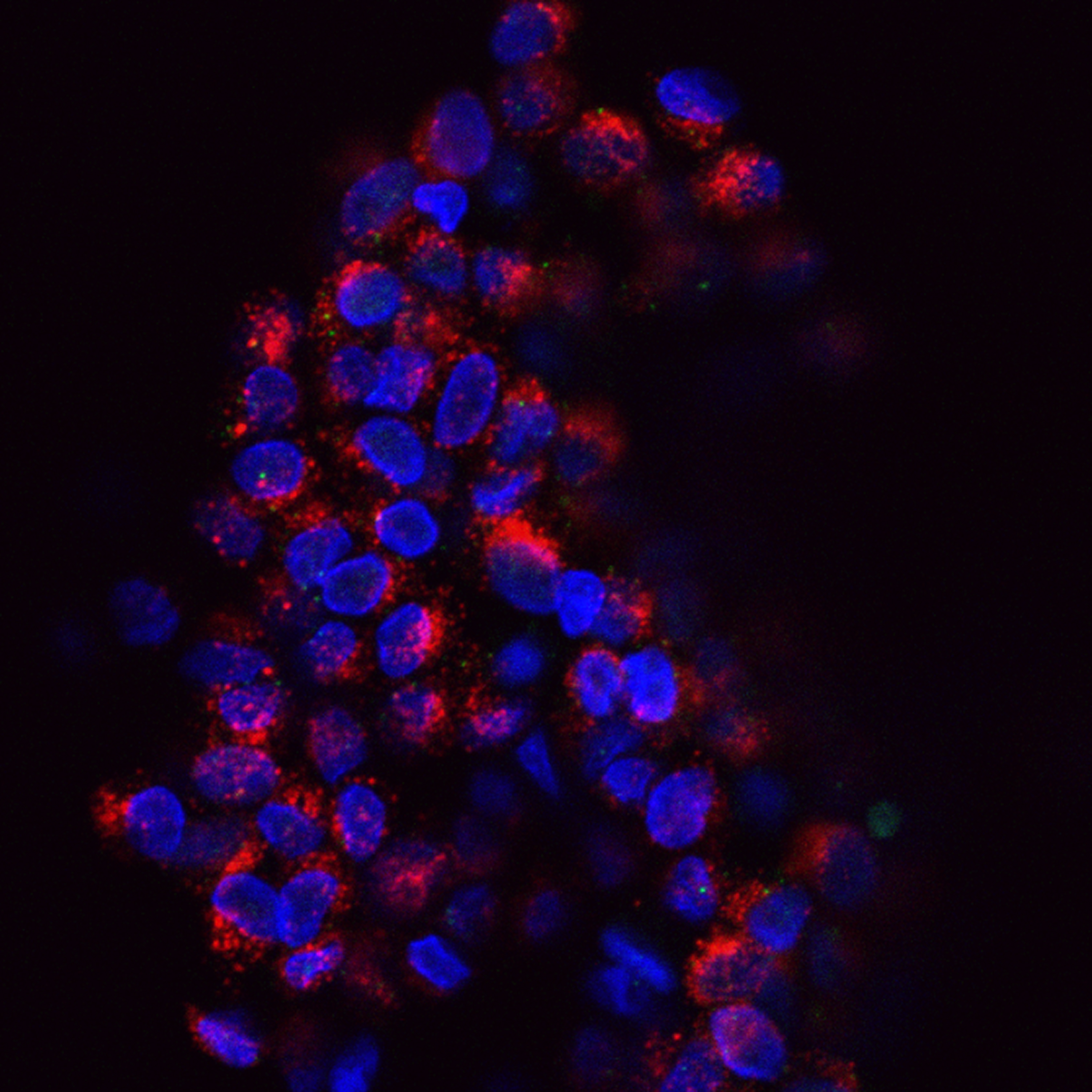Estrogen receptor can affect resistance to endocrine therapy and metastasis in breast cancer

Resistance to therapy is common in estrogen receptor positive (ER+) breast cancer, the most common type of breast cancer, and eventual development of metastatic disease is a leading cause of death.
Exploring what sets breast cancer cells on a path toward becoming resistant to therapy has led researchers at Baylor College of Medicine to discover that certain events linked to the estrogen receptor can contribute to the disease.
“Breast cancer is not generally thought to be a disease driven by chromosomal translocations, when two separate genes break in two and then the ends find each other to create a chimera, or fusion protein that is encoded by the front half of one gene and the back half of another,” said Jonathan Lei, graduate student in translational biology and molecular medicine at Baylor. “However, we detected through RNA-sequencing the presence of estrogen receptor 1 (ESR1) fusion transcripts in ER+ breast cancer, but we weren’t sure how they contributed to disease progression.”

The research team studied ESR1 fusions identified in both treatment-naive primary breast tumors – tumors that have not yet undergone treatment – as well as in late-stage, endocrine therapy-resistant, metastatic ER+ breast cancer patients. In cells from the metastatic patients, the researchers found two different ESR1 fusion events that generated very active estrogen receptor fusion proteins and went on to study their biological properties in detail.
How ESR1 fusion events contribute to breast cancer progression
The researchers tested whether the two ESR1 fusion events were drivers of endocrine therapy resistance by individually expressing each fusion in two ER+ breast cancer cell line models: T47D and MCF7.
The two hyperactive fusion proteins, part estrogen receptor and part fusion partner protein, caused profound endocrine therapy resistance because the part of the estrogen receptor that interacts with estrogen and with breast cancer drug tamoxifen was replaced with a protein fragment from the partner gene, which caused unregulated growth.
More surprising was the ESR1 fusions also could promote cell motility and cancer spread through the activation of a metastasis program called epithelial to mesenchymal transition. This potentially explains why these active ESR1 fusion genes have been found only in advanced breast cancer cases so far; they can be the actual cause of metastasis.
The researchers also found a way to suppress ESR1 fusion-driven growth at primary and metastatic sites using existing FDA-approved breast cancer drugs called palbociclib and abemaciclib that target CDK4/6 cell cycle proteins.
These findings are important because they help explain how endocrine therapy drug resistance and metastasis can be linked lethal processes,” Lei said.
“Our studies should drive more dedicated efforts to identify and characterize additional ESR1 fusions in early and late-stage ER+ breast cancer,” Lei added.
More ESR1 fusions are being detected in metastatic breast cancer, and many precision medicine programs are now including RNA-sequencing in patient care plans, as sequencing technologies continue to improve and become more cost effective.

“From the clinical perspective, this study suggests that the diagnosis of an active ESR1 fusion could guide treatment by selecting CDK4/6 inhibitor monotherapy for patients with highly endocrine therapy resistant metastatic ER+ disease where traditionally, chemotherapy has been the standard of care,” said Dr. Matthew Ellis, McNair Scholar and director of the Lester and Sue Smith Breast Center, part of the NCI-designated Dan L Duncan Comprehensive Cancer Center at Baylor.
“This research adds to the catalog of clinically actionable changes in the breast cancer genome,” Ellis added.
To read all the details of this study, go to the article in the journal Cell Reports.
This work was supported by the Susan G. Komen Foundation, the Cancer Prevention and Research Institute of Texas, the AVON Foundation, The Robert and Janice McNair Foundation, the Breast Cancer Research Foundation, the Department of Defense and the National Cancer Institute of the National Institutes of Health.
See a full list of contributors and their affiliations.



